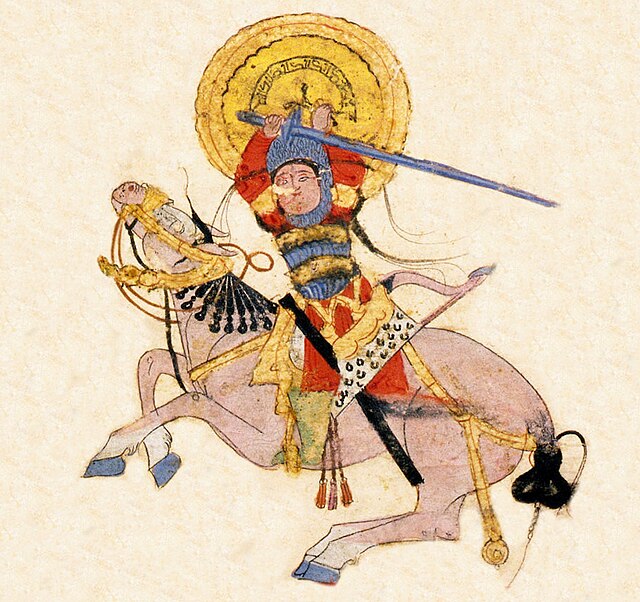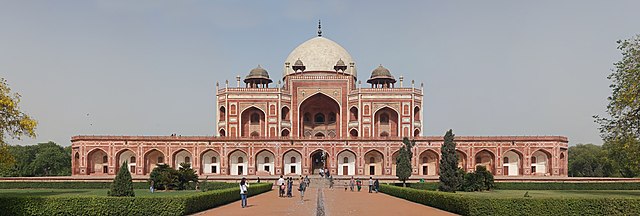The Sultanate of Rûm was a culturally Turco-Persian Sunni Muslim state, established over conquered Byzantine territories and peoples (Rûm) of Anatolia by the Seljuk Turks following their entry into Anatolia after the Battle of Manzikert (1071). The name Rûm was a synonym for the medieval Eastern Roman Empire and its peoples, as it remains in modern Turkish. The name is derived from the Aramaic (rhōmī) and Parthian (frwm) names for ancient Rome, via the Greek Ῥωμαῖοι (Romaioi).
Horseman with Anatolian Seljuk equipement, in Varka and Golshah, mid-13th century miniature (detail), Konya, Sultanate of Rum.
Gold coinage of Suleiman II of Rum, Konya, 597 H (1200-1201 CE)
Kızıl Kule (Red Tower), built between 1221 and 1226 by Kayqubad I in Alanya
Inlaid metal candle holder, probably Konya, 1250-1300.
The composite Turko-Persian, Turco-Persian, or Turco-Iranian is the distinctive culture that arose in the 9th and 10th centuries AD in Khorasan and Transoxiana. According to the modern historian Robert L. Canfield, the Turco-Persian tradition was Persianate in that it was centered on a lettered tradition of Iranian origin; it was Turkic in so far as it was for many generations patronized by rulers of Turkic ancestry; and it was "Islamicate" in that Islamic notions of virtue, permance, and excellence infused discourse about public issues as well as the religious affairs of the Muslims, who were the presiding elite."
Ghaznavid portrait, Palace of Lashkari Bazar. Schlumberger noted that the turban, the small mouth and the strongly slanted eyes were characteristically Turkic.
Marble wall border, Palace of Sultan Mas'ud III, Ghazni, Afghanistan, 12th century.
Prince on his throne, with standing courtesans, Afrasiyab, Samarkand, dated 1170-1220. National History Museum of Samarkand.
Tomb of Humayun shares similar patterns with Taj Mahal








